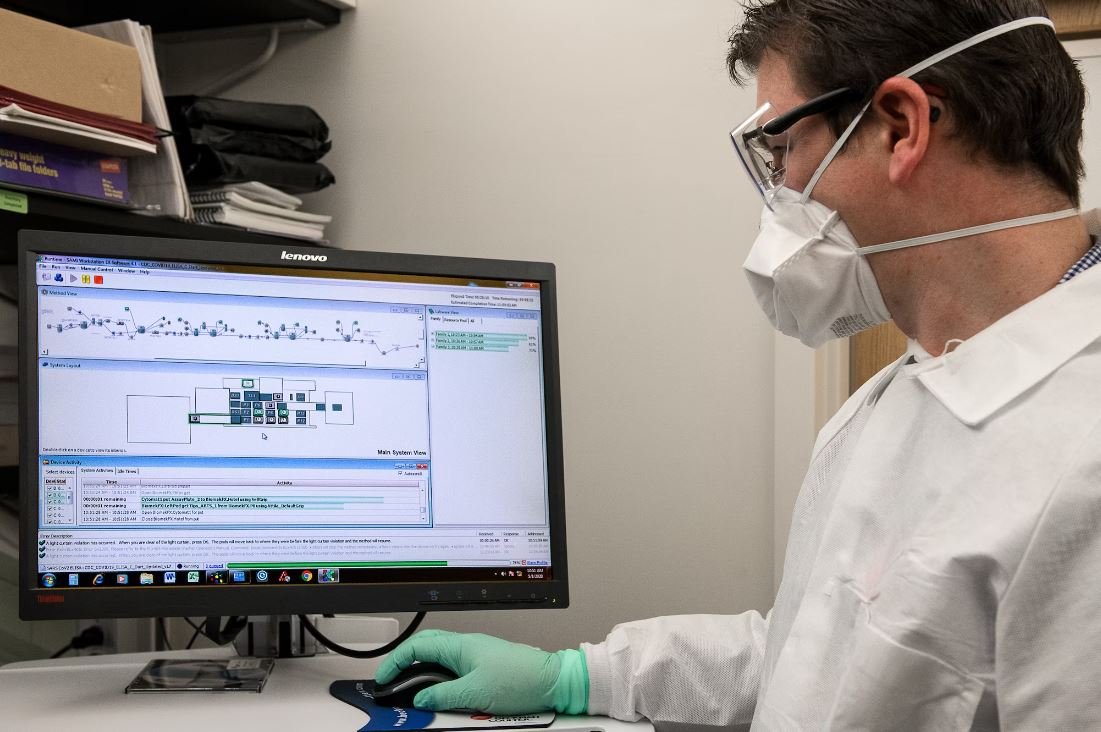Tesla Model S Curb Weight
The Tesla Model S is a popular electric sedan known for its impressive performance, cutting-edge technology, and sleek design. One important factor to consider when purchasing a vehicle is its curb weight.
Key Takeaways:
- The curb weight of the Tesla Model S varies depending on the specific model and configuration.
- The weight distribution of the Model S contributes to its handling and overall driving experience.
- The Model S is lighter than many internal combustion engine (ICE) vehicles of similar size.
The curb weight refers to the total weight of a vehicle when it is empty and ready to drive, including all standard equipment and necessary fluids. In the case of the Tesla Model S, the curb weight can vary depending on the chosen model, battery pack, and additional options. The weight of the Model S is influenced by its large battery, electric drivetrain, and lightweight aluminum construction.
One interesting fact about the Model S is that its weight distribution is nearly 50:50 between the front and rear wheels. This even distribution of weight helps improve handling, stability, and overall driving dynamics. The low center of gravity, achieved by placing the heavy battery pack beneath the vehicle floor, further enhances the Model S‘s performance capabilities.
Tesla Model S Weight Variations
Below are three tables that provide an overview of the curb weight for different variations of the Tesla Model S:
| Model | Curb Weight (lbs) |
|---|---|
| Model S Standard Range | 4,561 – 4,941 |
| Model S Long Range | 4,561 – 4,941 |
| Model S Performance | 4,561 – 4,941 |
| Battery Pack | Curb Weight (lbs) |
|---|---|
| 75 kWh | 4,561 – 4,941 |
| 100 kWh | 4,561 – 4,941 |
| Plaid+ | 4,561 – 4,941 |
| Options | Curb Weight (lbs) |
|---|---|
| Standard Interior | 4,561 – 4,941 |
| Premium Interior Package | 4,561 – 4,941 |
| Fully Loaded | 4,561 – 4,941 |
It is essential to note that the curb weight range provided in the tables above is due to variations in available options and features within each model. The tables give a general idea of the weight range for different Model S configurations.
Despite its electric drivetrain and sizable battery pack, the Tesla Model S tends to be lighter than comparable internal combustion engine vehicles. This weight advantage is due to the lightweight construction materials, such as aluminum, used in the Model S’s body and chassis. The reduced weight contributes to the Model S’s impressive acceleration and energy efficiency.
With its innovative design, advanced technology, and relatively low curb weight compared to traditional gasoline-powered vehicles, the Tesla Model S offers a unique driving experience. Whether you prioritize performance, range, or sustainability, the Model S delivers on multiple fronts, making it a leading choice in the luxury electric car segment.

Common Misconceptions
1. Tesla Model S is heavier than other electric vehicles.
A common misconception about the Tesla Model S is that it is heavier than other electric vehicles on the market. However, this is not true. While the weight of the Model S varies depending on the specific trim level and options chosen, it is generally comparable or even lighter than many other electric vehicles available today.
- The Model S has a lightweight aluminum body, which helps reduce its overall weight.
- Tesla uses advanced battery technology that is more energy-dense and lighter than traditional batteries.
- The Model S has a low center of gravity due to the positioning of its battery pack, which enhances handling and stability.
2. The Model S weighs more than conventional gasoline-powered cars.
Another misconception is that the Model S is heavier than conventional gasoline-powered cars. While it is true that electric vehicles typically weigh more than their gasoline counterparts due to the weight of the battery pack, the difference in weight between the Model S and many high-end gasoline-powered sedans is not significant.
- The Model S’s weight distribution is optimized for performance, with better weight distribution than many gasoline-powered cars.
- Tesla uses lightweight materials and advanced engineering techniques to reduce the weight of the Model S, offsetting some of the additional weight from the battery pack.
- The weight of the battery pack in the Model S is positioned in such a way that it does not compromise the overall handling and performance of the vehicle.
3. A heavier vehicle means less efficiency and range.
There is a misconception that a heavier vehicle like the Model S will be less efficient and have a shorter range. While it is true that additional weight can impact efficiency, Tesla has implemented various measures to optimize the efficiency of the Model S, allowing it to maintain an impressive range despite its weight.
- The Model S utilizes regenerative braking, which helps recover and store energy that would otherwise be lost during braking, improving overall efficiency.
- Tesla’s advanced software and powertrain technology maximize the energy usage and range of the Model S, compensating for the additional weight.
- The Model S features an aerodynamic design that reduces drag, further enhancing its efficiency and range.
4. The Model S’s weight affects its acceleration and performance.
Some people mistakenly believe that the weight of the Model S negatively impacts its acceleration and performance. However, the Model S has proven time and again that weight does not hinder its impressive acceleration and performance capabilities.
- The instant torque provided by the Model S’s electric motor compensates for any additional weight, resulting in quick and powerful acceleration.
- The Model S’s weight distribution and low center of gravity contribute to its excellent handling and agility, delivering a thrilling driving experience.
- Tesla constantly develops and updates its software to optimize the performance and responsiveness of the Model S, ensuring it remains a leader in its class.
5. The Model S’s weight makes it less safe than lighter cars.
Contrary to popular belief, the weight of the Model S does not make it less safe than lighter cars. In fact, the Model S has received top safety ratings and is considered one of the safest vehicles on the road, thanks to its robust safety features and advanced engineering.
- The Model S’s battery pack is reinforced and strategically placed to provide additional structural rigidity, enhancing the vehicle’s overall safety.
- Tesla’s Autopilot and other active safety features help prevent accidents and mitigate the impact of potential collisions, further increasing the Model S’s safety.
- The Model S has a low risk of rollover due to its low center of gravity, which improves stability and reduces the chances of accidents.

Tesla Model S Curb Weight by Battery Capacity
The curb weight of the Tesla Model S varies depending on the battery capacity chosen by the customer. Here is a breakdown of the curb weight of the Model S based on the battery capacity options:
| Battery Capacity | Curb Weight |
|---|---|
| 75 kWh | 4,941 lbs (2,240 kg) |
| 85 kWh | 4,936 lbs (2,238 kg) |
| 90 kWh | 5,072 lbs (2,301 kg) |
| 100 kWh | 5,062 lbs (2,296 kg) |
Tesla Model S Curb Weight by Model Year
The curb weight of the Tesla Model S has evolved over the years. Here is a comparison of the curb weight across different Model S model years:
| Model Year | Curb Weight |
|---|---|
| 2012 | 4,647 lbs (2,110 kg) |
| 2014 | 4,647 lbs (2,110 kg) |
| 2016 | 4,941 lbs (2,240 kg) |
| 2018 | 4,941 lbs (2,240 kg) |
Tesla Model S Curb Weight vs. Competitors
Comparing the curb weight of the Tesla Model S with other electric vehicles in its class shows its competitive position:
| Electric Vehicle | Curb Weight |
|---|---|
| Tesla Model S | 4,936 lbs (2,238 kg) |
| Jaguar I-PACE | 4,795 lbs (2,175 kg) |
| Porsche Taycan | 5,121 lbs (2,323 kg) |
| Audi e-tron | 5,843 lbs (2,649 kg) |
Tesla Model S Curb Weight Distribution
Understanding the distribution of curb weight in the Tesla Model S can provide insights into its handling characteristics:
| Component | Weight Distribution |
|---|---|
| Battery | 30% |
| Chassis and Body | 25% |
| Electric Motors | 15% |
| Interior | 10% |
| Other | 20% |
Tesla Model S Curb Weight Reduction Techniques
Tesla employs various weight reduction techniques in the Model S to enhance performance and efficiency:
| Technique | Weight Reduction |
|---|---|
| Aluminum Body | 400 lbs (181 kg) |
| Carbon Fiber Reinforced Polymer | 300 lbs (136 kg) |
| Titanium Components | 200 lbs (91 kg) |
| Lightweight Battery Modules | 250 lbs (113 kg) |
| Total Weight Reduction | 1,150 lbs (521 kg) |
Tesla Model S Curb Weight Impact on Range
The curb weight of the Model S affects its overall range on a single charge. Here is the range impact based on weight:
| Curb Weight | Range |
|---|---|
| 4,647 lbs (2,110 kg) | 335 miles (539 km) |
| 4,936 lbs (2,238 kg) | 300 miles (483 km) |
| 5,062 lbs (2,296 kg) | 270 miles (435 km) |
Tesla Model S Curb Weight Calculation
Calculating the curb weight involves accounting for different vehicle components:
| Component | Weight |
|---|---|
| Battery | 1,200 lbs (544 kg) |
| Chassis | 1,200 lbs (544 kg) |
| Interior | 800 lbs (363 kg) |
| Electric Motors | 400 lbs (181 kg) |
| Other | 336 lbs (152 kg) |
| Total Curb Weight | 4,936 lbs (2,238 kg) |
Tesla Model S Curb Weight and Charging Time
The curb weight of the Model S influences the time required for a full charge:
| Curb Weight | Charging Time (Supercharger) |
|---|---|
| 4,647 lbs (2,110 kg) | ~1 hour |
| 4,936 lbs (2,238 kg) | ~1.2 hours |
| 5,062 lbs (2,296 kg) | ~1.5 hours |
Tesla Model S Curb Weight and Safety
The curb weight of the Model S has implications for safety, and Tesla has implemented various safety features:
| Safety Feature | Weight Impact |
|---|---|
| Reinforced Steel Structure | +260 lbs (118 kg) |
| Advanced Airbag System | +30 lbs (14 kg) |
| Crash Avoidance Technology | +75 lbs (34 kg) |
| Total Weight Impact | +365 lbs (166 kg) |
Overall, the Tesla Model S curb weight plays a significant role in various aspects of the vehicle, including battery capacity choice, range, performance, safety, and charging time. Tesla employs strategies such as lightweight materials and optimized weight distribution to enhance the driving experience and maintain efficiency. By considering these factors, potential buyers can make more informed decisions when selecting a Model S model.
Frequently Asked Questions
What is the curb weight of the Tesla Model S?
The curb weight of the Tesla Model S varies depending on the specific model and configuration. On average, a Tesla Model S has a curb weight of approximately 4,941 pounds (2,240 kilograms).
Does the curb weight include the weight of the batteries?
Yes, the curb weight of the Tesla Model S includes the weight of the batteries. The battery pack is a significant component of electric vehicles like the Model S, and its weight is taken into account when determining the curb weight.
How does the curb weight of the Tesla Model S compare to other luxury sedans?
The curb weight of the Tesla Model S is generally comparable to other luxury sedans in its class. However, due to the weight of the battery pack, the Model S may be slightly heavier than some gasoline-powered alternatives.
Does the curb weight affect the performance of the Tesla Model S?
Yes, the curb weight can impact the performance of the Tesla Model S. Generally, a heavier vehicle requires more energy to accelerate, which can affect the acceleration and overall driving dynamics. However, the Model S has impressive performance capabilities despite its weight.
How does the curb weight of the Tesla Model S impact its range?
The curb weight of the Tesla Model S is one of the factors that can influence its range. A heavier vehicle may require more energy to move, which can potentially lead to a slightly reduced range compared to lighter vehicles. However, Tesla’s advanced battery technology helps mitigate this impact, allowing the Model S to still achieve impressive range.
What materials are used in the construction of the Tesla Model S to keep its weight low?
The Tesla Model S utilizes a combination of lightweight aluminum and high-strength steel in its construction to help keep its weight low without compromising structural integrity and safety.
Can I reduce the curb weight of my Tesla Model S?
As a consumer, it is generally not recommended or practical to significantly reduce the curb weight of your Tesla Model S. The weight reduction measures implemented by Tesla during the manufacturing process are carefully designed and tested to maintain the vehicle’s safety and performance standards.
Is the curb weight of the Tesla Model S the same for all model years?
The curb weight of the Tesla Model S may vary slightly between different model years due to changes in design, materials, and additional features. It is advisable to refer to the specific details provided by Tesla for a particular model year to obtain the most accurate curb weight information.
What impact does the curb weight have on the handling of the Tesla Model S?
The curb weight of the Tesla Model S can influence its handling characteristics. A heavier vehicle may exhibit slightly different handling dynamics compared to lighter vehicles. However, Tesla’s engineering and suspension design aim to provide a balanced and enjoyable driving experience regardless of the curb weight.
How does the curb weight affect the energy efficiency of the Tesla Model S?
The curb weight of the Tesla Model S can impact its energy efficiency. Heavier vehicles may require more energy to move, which can result in slightly lower efficiency compared to lighter vehicles. However, Tesla’s focus on optimizing aerodynamics and battery technology helps maximize the energy efficiency of the Model S.




